How To Start A Cut Flower Garden
There's nothing nicer than filling your home with fresh blooms from your cut flower garden. Whether you like more color, lots of greenery or a mix, having a separate space for cutting flower varieties in your garden space is ideal to not only create lovely homemade bouquets, but to also not spoil the display in your flower beds and borders!
The perfect pastime, it's becoming a must in every flower loving home and growing your own flowers for arrangements is even easier on your purse, and good for the environment, too, as it cuts down 'flower-miles'. Plus, it is possible to have a year-round supply with spring, summer, fall and winter choices too. Read on to find out how to plan and grow a cutting garden, how to get started, tips on flowers to include and how to make them last.
- Find all our garden plant ideas in our edit.
What are good flowers for a cutting garden?
We spoke with Phil McCann, Plant Buyer at LazyFlora.com who recommends to 'Choose varieties of flowers to suit your garden soil and local conditions. Many cut flowers can be grown from seed raised in a greenhouse, on a windowsill or sown directly into the soil. The trick to getting a long-lasting display is sow little and often. Sow a small patch of seed, allow it to start growing and then sow another patch nearby. This results in blooms over a long period of time (unless you want a glut of one type of flower or e.g. growing for a particular date). Planning is therefore the key to success and keep things simple. Regular cutting of flowers is important as often this will encourage the plants to produce more blooms. Sow annuals (plants that grow, flower and die in a year), perennials (grow, flower, die down and then follow this cycle every year) and shrubs (last for many years). If it flowers it can be cut! Great examples of flowers for cutting are Ammi major and all dahlias. If things don't go according to plan then don't worry – it will take time to find what works in your garden.'
- Don't miss more garden ideas at our dedicated page.

(Image credit: Leigh Clapp)
How do you start a cutting garden?
Spring is a great time to prepare an area and begin the process of creating a cutting garden. Select a sunny, sheltered spot with well-drained, fertile soil and prepare it carefully.
Top tips:
- Improve soil with well-rotted compost or manure.
- Remove all weeds, add in organic matter and rake the soil to a fine tilth.
- You may like to use a Mypex weed control mat to prepare a sterile weed-free seed bed.
- Learn how to make compost for your own fertilizer.
A vegetable garden is a great place to grow flowers for cutting and will attract beneficial insects.
Some people choose to grow in rows for ease of maintenance and access; others create blocks. You will need to reach the flowers easily to pick them, so ensure you include accessible paths.
Creating dedicated raised beds and planting flowers in rows or blocks can be useful for keeping things organised and manageable. Beds of around 1m x 3m with pathways around them will give easy access for cutting without you having to trample over beds and can be weeded in 30 minutes.
- Garden design : expert advice on how to perfect yours

(Image credit: Leigh Clapp)
- See more information on how to create raised beds in our guide.
If you are looking to grow flowers for cutting in your garden then creating a dedicated border with flowers arranged in rows may seem a bit too regimented, so perhaps opt for a more relaxed style which won't jar with the rest of your planting. Dotting single plants randomly will look odd and be tricky to harvest so try to plant clusters of the same plant together.
Alternatively you could just add extra flowers and foliage around existing shrubs. If using existing borders, plant flower crops in large groups so it doesn't spoil the garden when you cut some of the blooms.
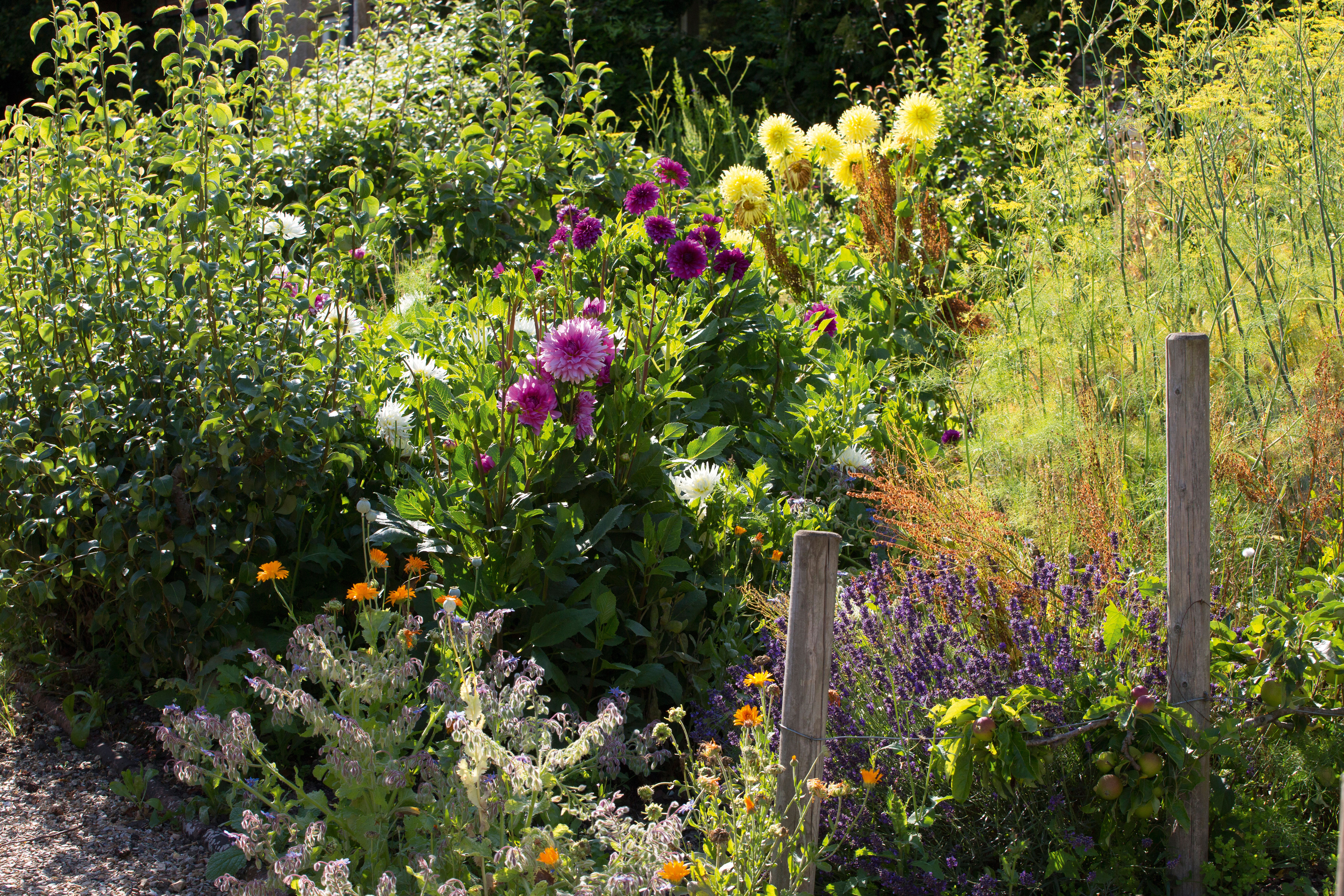
(Image credit: Leigh Clapp)
- Flower bed ideas : For blooms in all seasons.
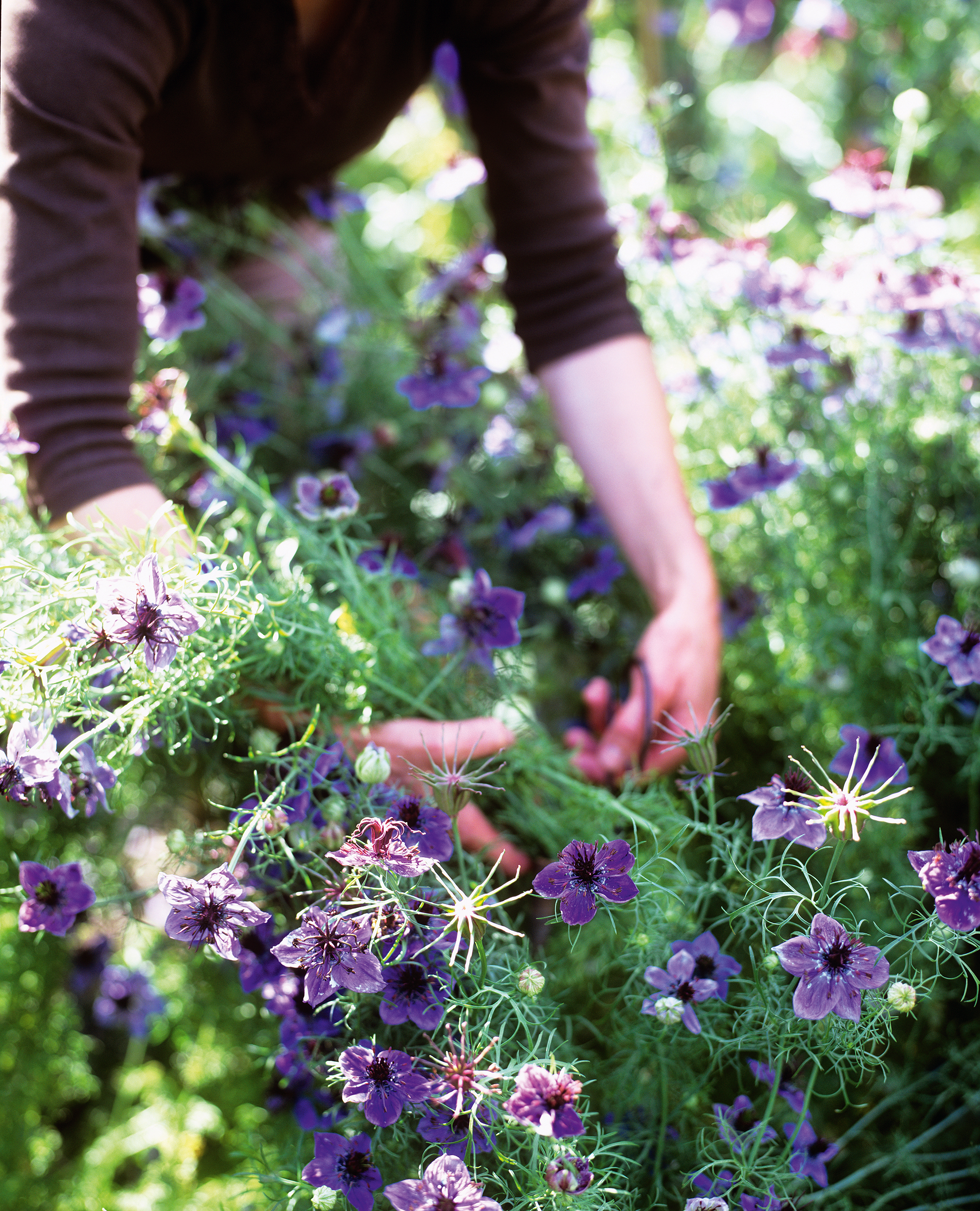
(Image credit: Leigh Clapp)
How to plant a cutting garden
Choose easy flowers and foliage that are quick to grow, good value, produce plenty of blooms and look as good in borders as they do in a vase.
Keep in mind the end result and select flowers you love (otherwise you won't want to pick them!). Include a variety of shapes and textures, long, straight stems, some with scent, and even the color scheme you want to complement inside your home.
Use some old-fashioned varieties for blousy, scented arrangements that will fill your senses, and don't forget the value and beauty of foliage as well.
You may like to take inspiration from garden borders or the field side and look at how flowers grow, keeping the images in mind when arranging for harmonious or wild effects.
- Use our guide to creating a garden color scheme to find out more about this.
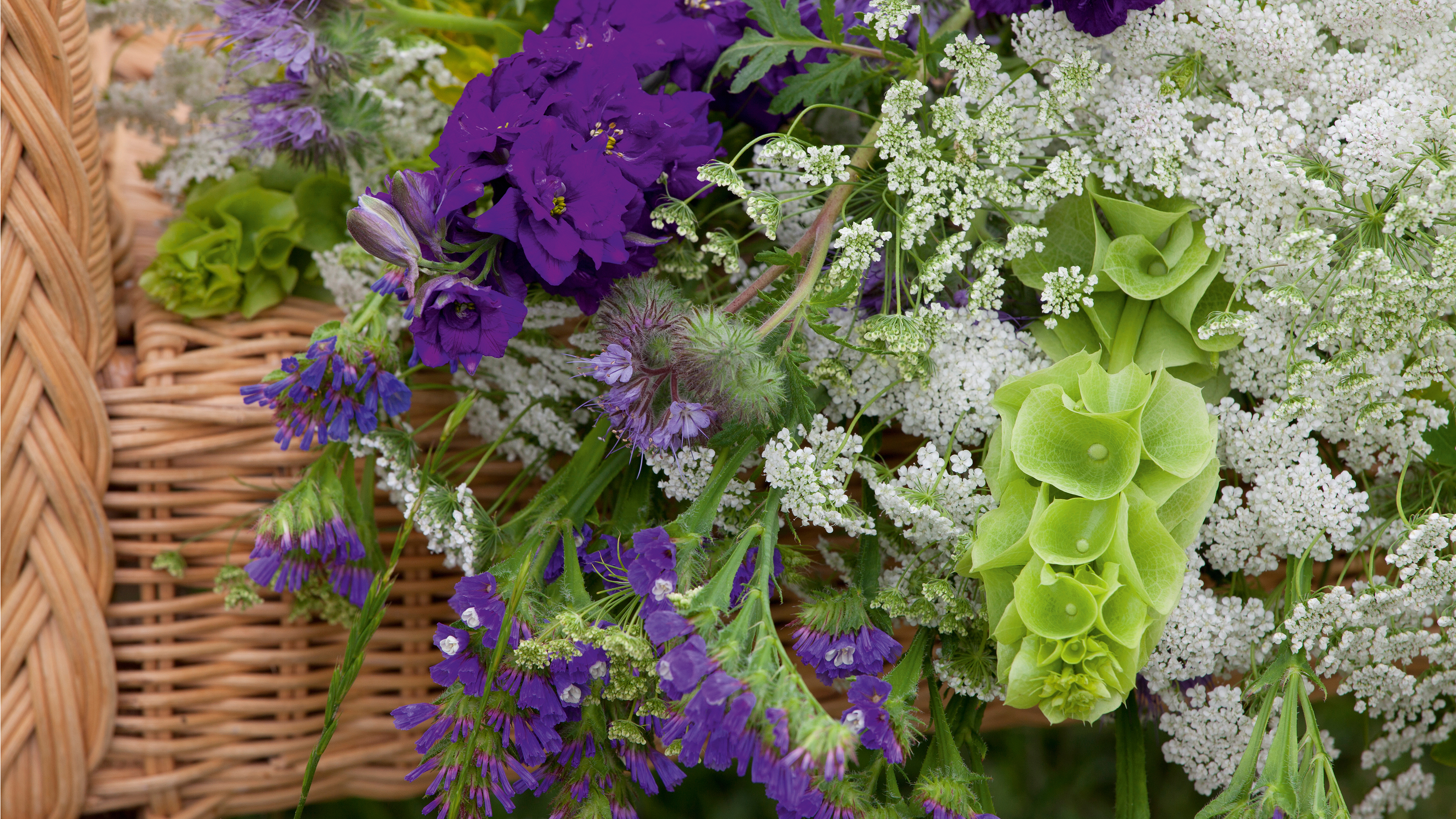
(Image credit: Leigh Clapp)
Top tips for a thriving cut flower garden
- Grow from seed: Growing from seed is the most economical choice, and if you stagger sowings you will have blooms through the year. Some flowers will need to be planted under cover in trays whilst others are best direct sown into the bed. Always check the sowing instructions on the seed packet.
- Plan ahead: This will ensure a varied production – whether simple and architectural shapes or country style with old-fashioned scented favourites.
- Add variety: It is best to grow a mix of hardy and half-hardy annuals and biennials, with perennials as the backbone to your supply.
- Go big: Growing quantities of perennials, such as achillea, campanula, lobelia and thalictrum, from seed will give you flowers that increase in number each year. Before the perennials occupy the space, fill it up with fast-growing annuals, such as poppies, stock, gypsophila, sunflowers and calendulas.
- Natural support: Plant flowers close together or put in supports ready to stop tall plants flopping over as they grow. Combine plants of similar heights, growing conditions and flowering times, including both focal flowers and fillers.
- Find all our trellis ideas for added support in our edit.
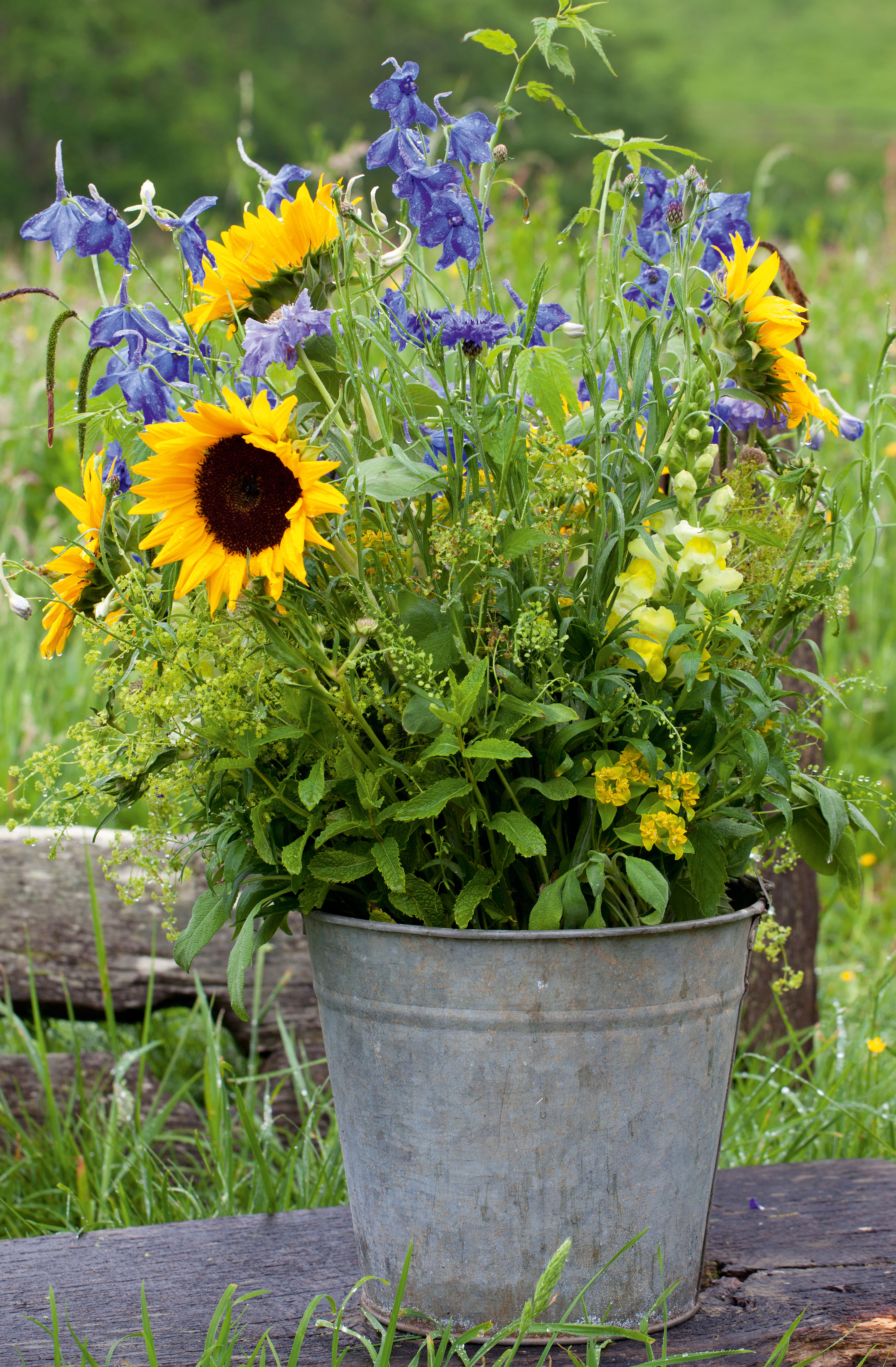
(Image credit: Leigh Clapp)
- Plan for the year: For a year-round successional supply, good choices include: hellebores, spring bulbs, aquilegia, wallflowers, pinks, Sweet William, peonies, alstroemeria, sunflowers, dahlias, asters, chrysanthemums, kniphofias, and daphne in winter.
- Choose cut and come again flowers: Include an abundant medley of self-replenishing, cut-and-come-again varieties, such as cosmos, zinnias, scabious and sweet peas, which will produce more flowers after cutting.
- Remember bouquet fillers: For foliage and fillers, include delicate ferns, strappy ornamental grasses, silvery eucalyptus, and include herbs for scent and texture, such as bronze fennel and rosemary.
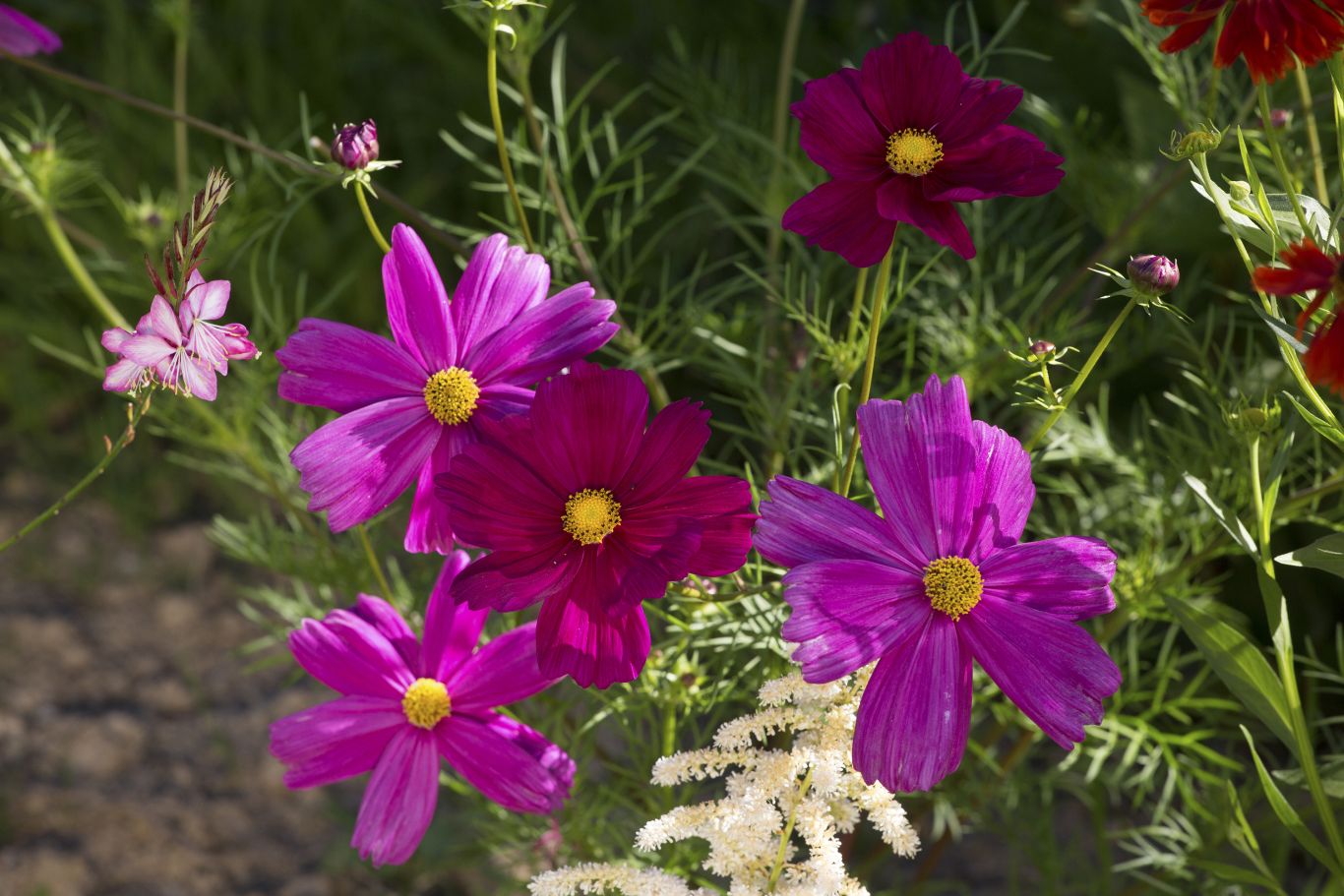
(Image credit: Leigh Clapp)
- Include more fragrance with some additions from your herb garden too.
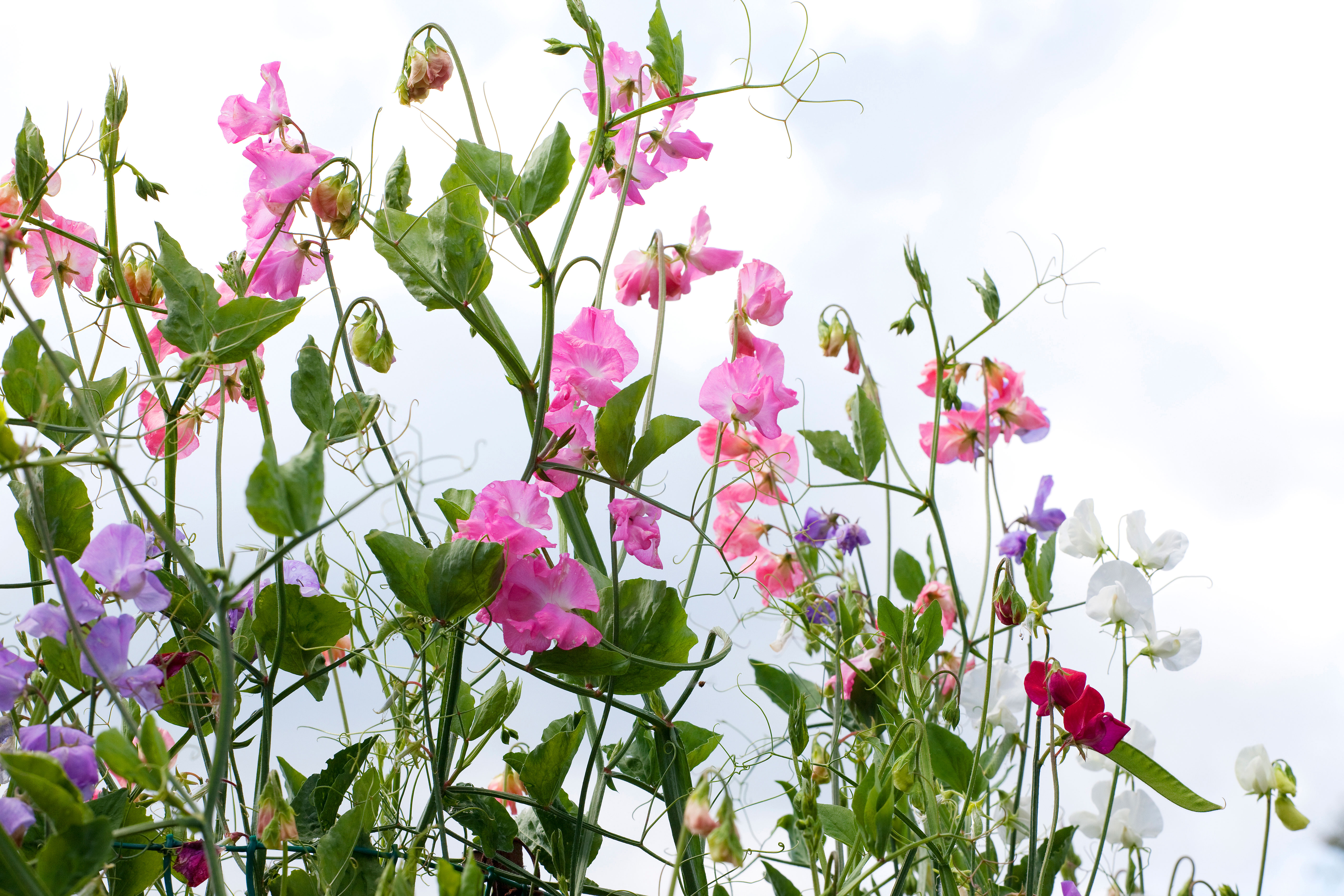
(Image credit: Leigh Clapp)
Why not also use your cutting garden to experiment with new plants and colors? Include some bold shapes, maybe spiky eryngiums, flamboyant gladioli, or wispy and romantic forms, such as lacy ammi varieties.
If you find particular flowers and foliage plants thrive in your conditions, hunt out more varieties of the same.
Your little floral patch will also be a boon for wildlife, attracting insects on the hunt for nectar and pollen.
- You can also see our guide to planting a wildlife friendly garden for more ways to attract beneficial bugs and insects.

(Image credit: Leigh Clapp)
How to maintain a cut flower garden
- Deadhead and cut flowers regularly and keep up the weeding and watering.
- When watering, don't shower plants from overhead, but water carefully with a steady jet flow at the base of the plant.
- The best time to water is in the evening as it allows the plants to soak up what they need overnight.
- Mulching is valuable to retain moisture and suppress weeds.
- Mulch perennials in autumn and feed in spring – they need it if you keep cutting their flowers.
- Many recommend a no-dig method, as the less you dig over the soil, the less weeds are disturbed.
- Cutting actually encourages more flowers to grow, especially annuals that have a survival imperative to set seed.
- Let some of your flowers set seed and collect them to sow the following year, replenishing your own stock for free.
A cutting garden is for harvesting; so don't expect it to look pristine at all times.

(Image credit: Leigh Clapp)
How do you take a cutting from a garden?
- Cut flowers early: Snipping early in the morning before morning dew has dried, when their stems are filled with stored food. Flowers gradually dehydrate as the day warms up. You can also cut flowers in the evening and put them into buckets of water to condition before arranging the following morning.
- Make a clean cut: Cut with a clean, sharp knife or shears. Invest in good quality equipment and maintain it well. Blunt tools will crush the stems, damage the parent plant as well as inhibit the cut flower from absorbing water.
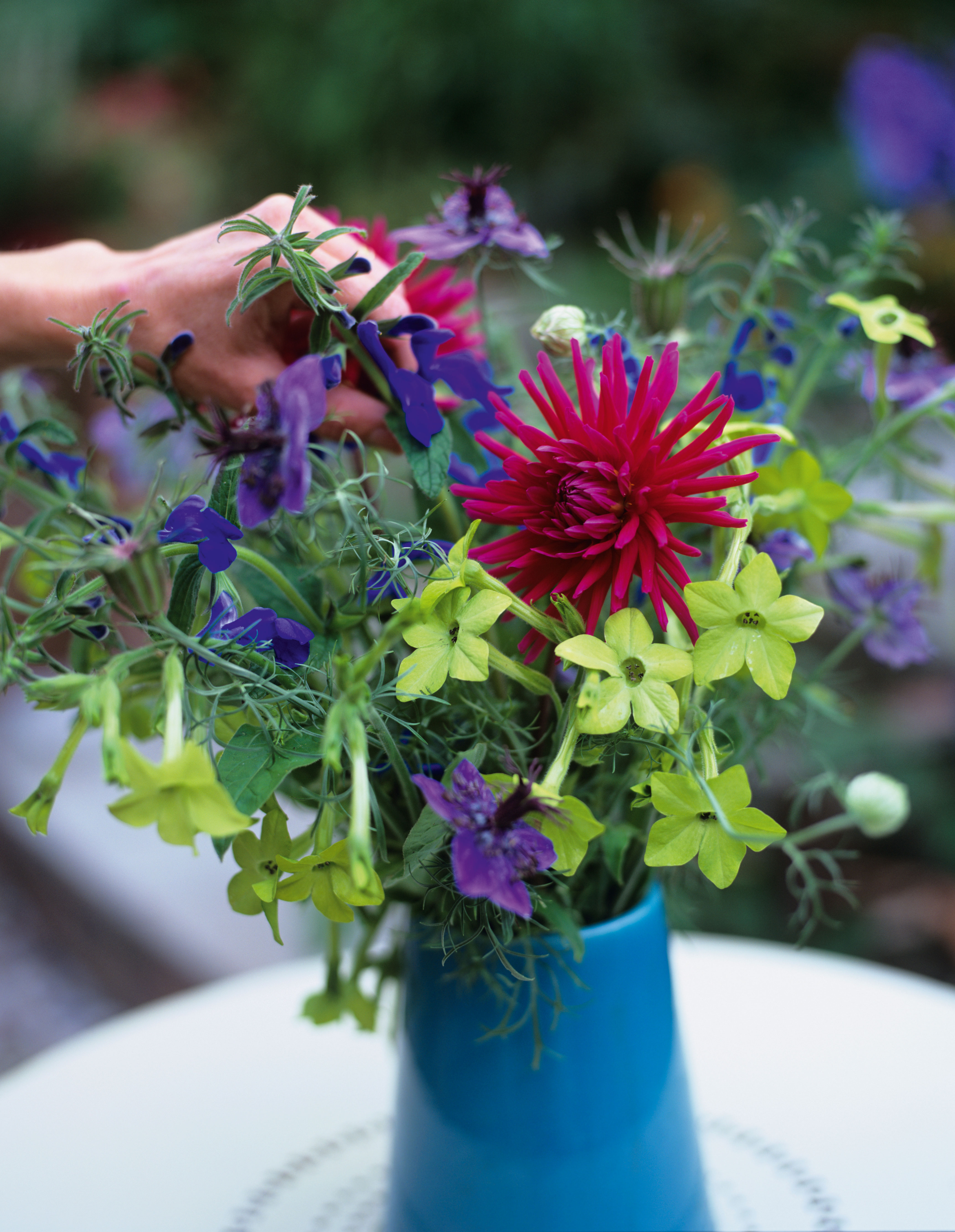
(Image credit: Leigh Clapp)
Cutting gardens to visit for inspiration

(Image credit: Leigh Clapp)
Blooming Green Flowers, Linton, Kent. Cut flower grower where you can pick your own. Open Fridays, July to October. Grow your own cut flowers workshops.
West Dean Gardens, West Dean, West Sussex. Walled kitchen garden with cut flower beds. Open February to December.
Godinton House and Gardens, Ashford, Kent. Walled garden with beds dedicated to flowers.
Easton Walled Gardens Grantham, Lincolnshire.
'The pickery' area of these historic gardens is devoted to cut flowers.
The Walled Garden at Mells, Rectory Garden, Mells, Somerset. Cottage garden, seasonal flowers and plant nursery.
- Tidy: Remove leaves that will be under water.
- Condition the flowers: Help blooms acclimatise by placing them straight into a bucket of lukewarm water as you cut and leave in a cool place for a few hours or overnight.
- Have two buckets: One for long-stemmed flowers, one for smaller flowers.
- Attention to detail: Ensure your vase is clean, then recut stems at a 45-degree angle before arranging.
- Asses water temperature: Always use tepid water in your vases to avoid air bubbles in the stems, except for daffodils and tulips, which prefer cold.
- Know which flowers to cut and when: Different types of flowers are harvested at appropriate stages in their development. Flowers with multiple buds on each stem should have at least one bud showing colour and one bud starting to open before being cut. Flowers that grow on individual stems should be cut when open.
- Focus on length: Cut long stems about one inch from the bottom of the main stem.
- Care and maintenance: Change the water in the vase frequently and recut stems if flowers start to wilt. Keep out of direct sunlight and way from fruit, which releases ethylene, a gas that causes flowers to age faster. A homemade flower preservative can be added to the water – 1 tsp sugar, 1 tsp bleach and 2 tsps lemon juice to approximately one litre of water.
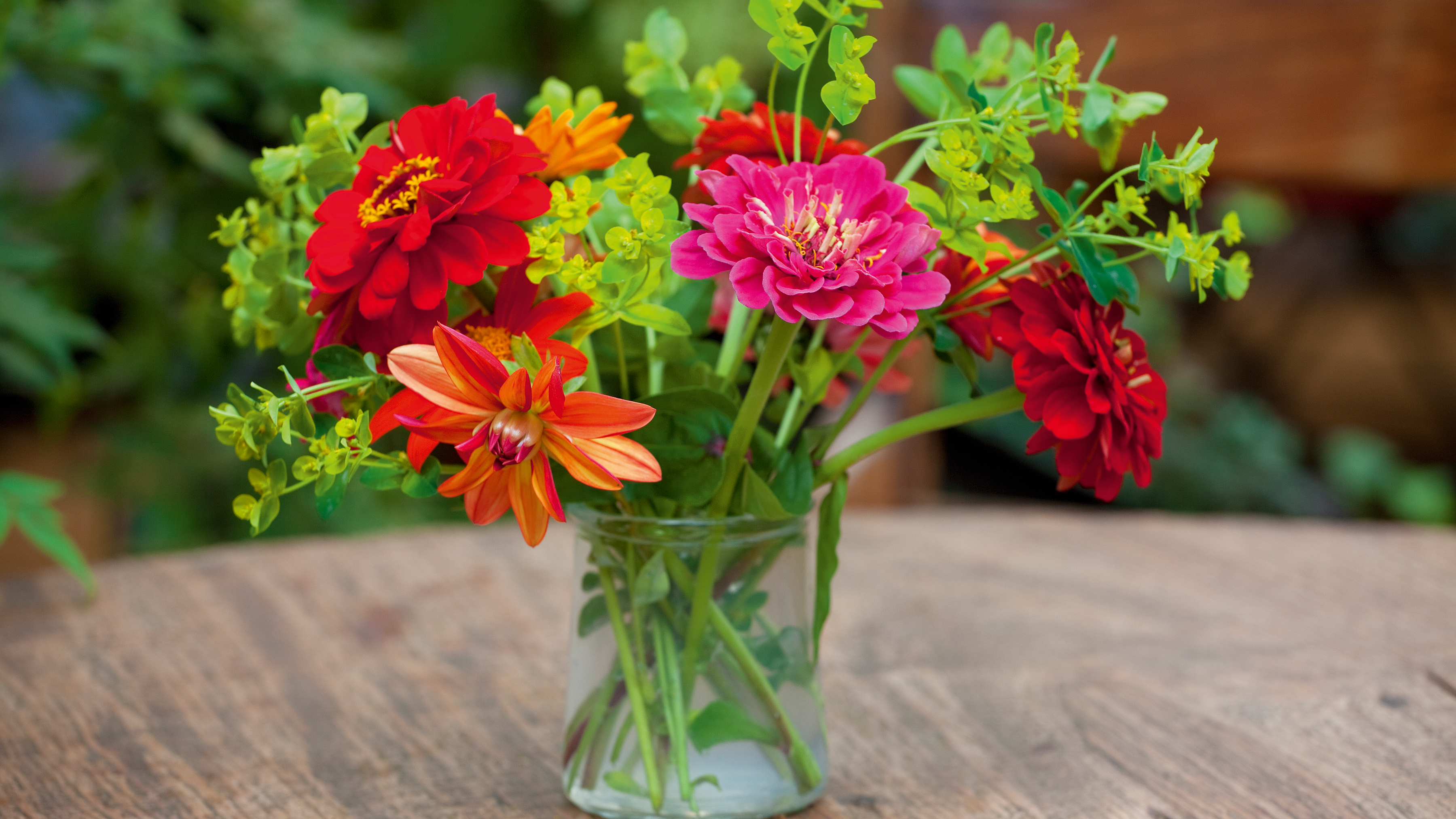
(Image credit: Leigh Clapp)
12 good flowers for a cutting garden

(Image credit: Leigh Clapp)
(Above, left to right)
Peonies thrive in well-drained soil in a sunny position. Integrate plenty of organic matter and don't plant too deeply. Cut blooms when about three-quarters open.
Delphiniums add height to an arrangement. They need full sun and fertile, well-drained soil. After the first flush of blooms, cut the plant to the ground, mulch with compost, water well and you should get a second bloom in late summer to autumn.
Sweet peas are the perfect cut-and-come-again flowers, hard to beat for scent and their translucent beauty. Provide them with sun, rich well-drained soil and some supports to scramble up.
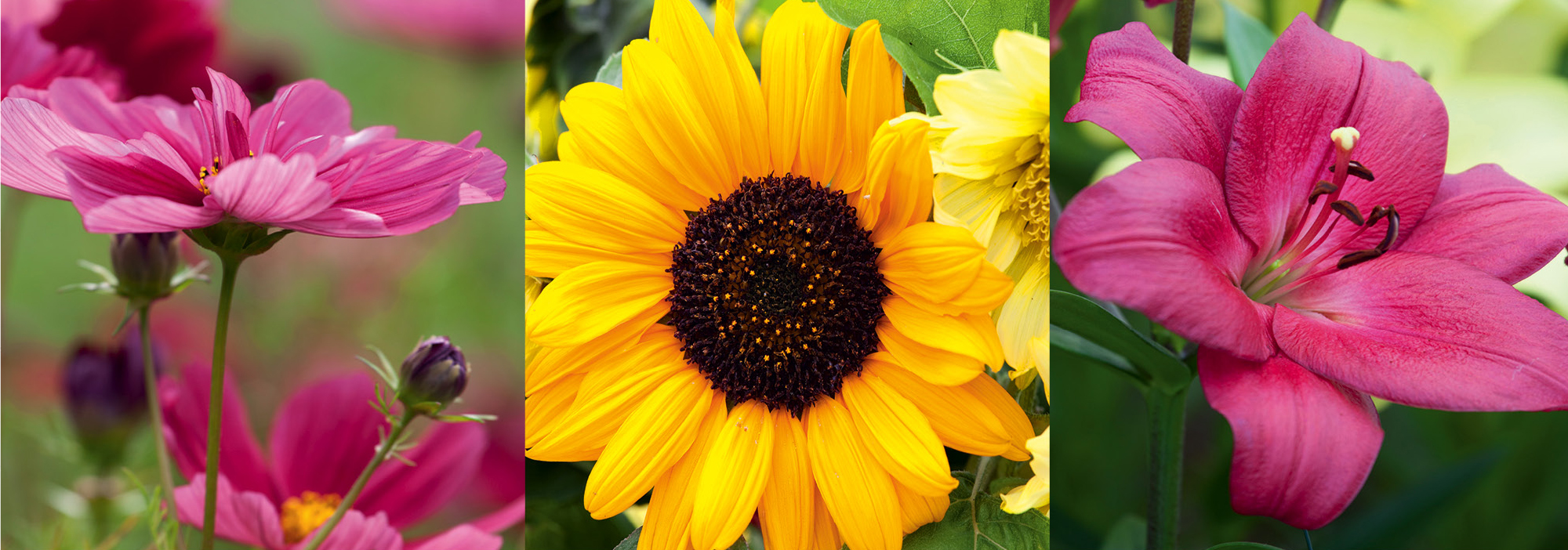
(Image credit: Leigh Clapp)
(Above, left to right)
Cosmos is a classic cut flower, providing clouds of bloom from June to November, and these half-hardy annuals are easy to grow. They need full sun, moist but well-drained chalky or neutral soil. Direct sow in early May.
Sunflowers are a cheery choice and offer a range of sizes and colors. Simply sow the seed in spring once the frost has passed, where you want to grow sunflowers. They need sun and loose, well-draining soil.
Lilies come in a plethora of hues and are long-lasting in the vase. Provide them with a sunny spot and rich fertile soil that is moist but free-draining. You can remove the anthers as soon as the flowers open as the pollen stains skin and clothing.
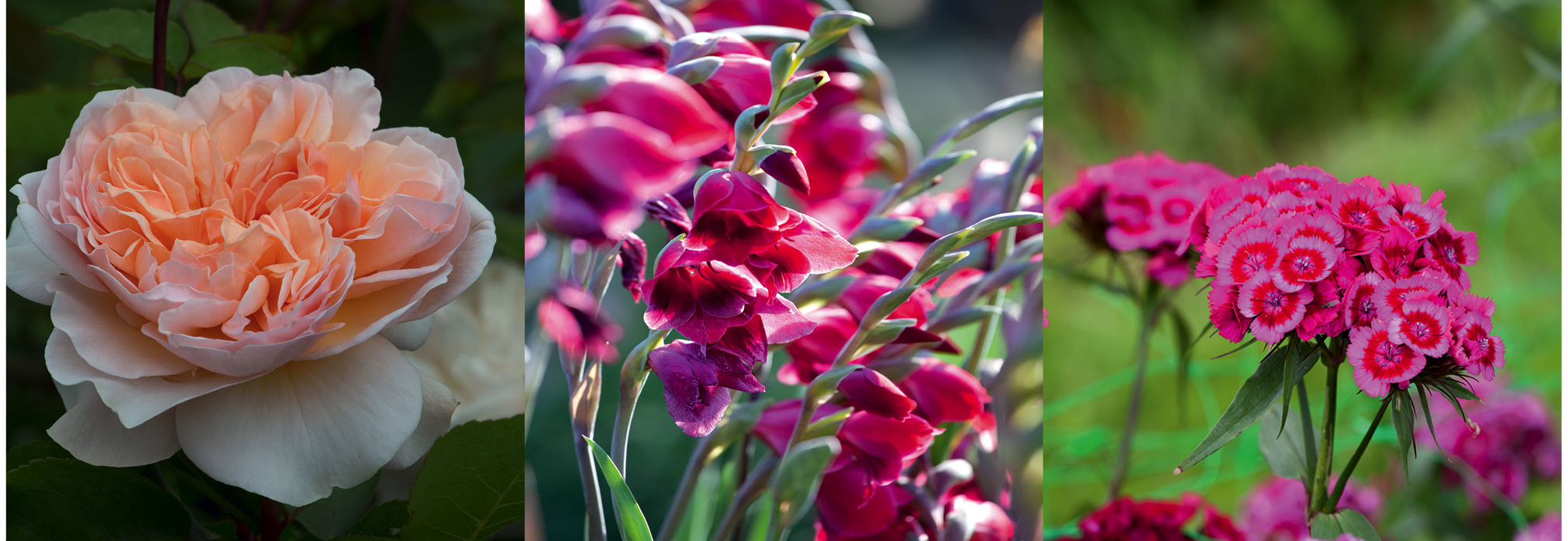
(Image credit: Leigh Clapp)
(Above, left to right)
Roses are quintessential for beauty and scent, with varieties for sun and shade. Incorporate compost or manure when planting and feed generously as they grow. The best time to cut roses as they start to unfurl is after 3pm, when they are highest in their food reserves. This will help them last longer in the vase.
Gladioli make flamboyant cut flowers and last well in the vase. Plant the corms in the garden or in containers from May to July for a succession of blooms. They like rich, well-drained soil, plenty of water, and feed while the flowers develop.
Dianthus including pinks, carnations and Sweet William, add color and scent. Regular cutting ensures a long flowering season. Sow in full sun or part shade in fertile, well-drained soil. Water established plants only in dry spells.
- How to create a cottage garden .
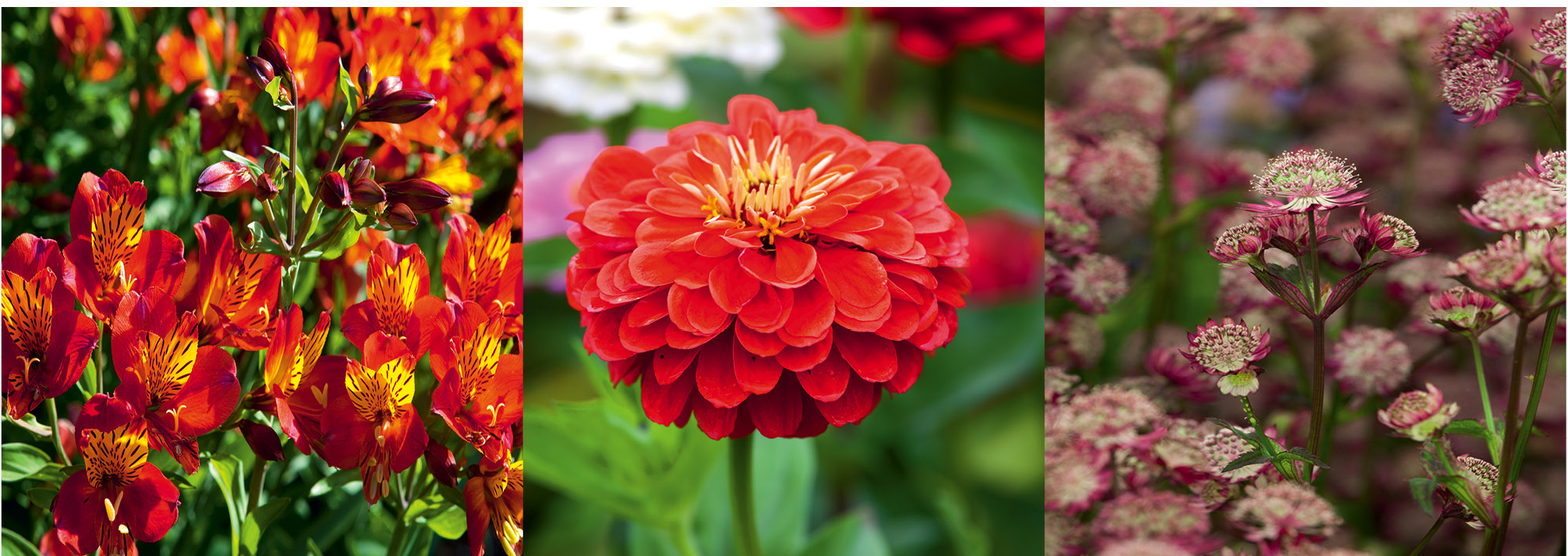
(Image credit: Leigh Clapp)
(Above, left to right)
Alstroemeria are great-value, long-flowering perennials from summer to fall, and last up to three weeks in the vase. Plant in early summer in a sheltered spot, with plenty of organic matter and a good winter mulch.
Zinnias are undemanding annuals and are available in a range of bright colours that will add a real zing to your arrangements. Sow directly into free-draining fine soil after all danger of frosts has passed. They need plenty of sun and water well.
Astrantia is a delicate perennial that blends prettily with other blooms. They require moist, well-drained fertile soil in sun or light shade. A tip to increase their vase life is to sear the stems in boiling water straight after cutting.
Get your flowers on display 🌷
How To Start A Cut Flower Garden
Source: https://www.realhomes.com/advice/how-to-grow-a-cutting-garden-grow-your-own-fresh-flowers
Posted by: henningliamel.blogspot.com

0 Response to "How To Start A Cut Flower Garden"
Post a Comment